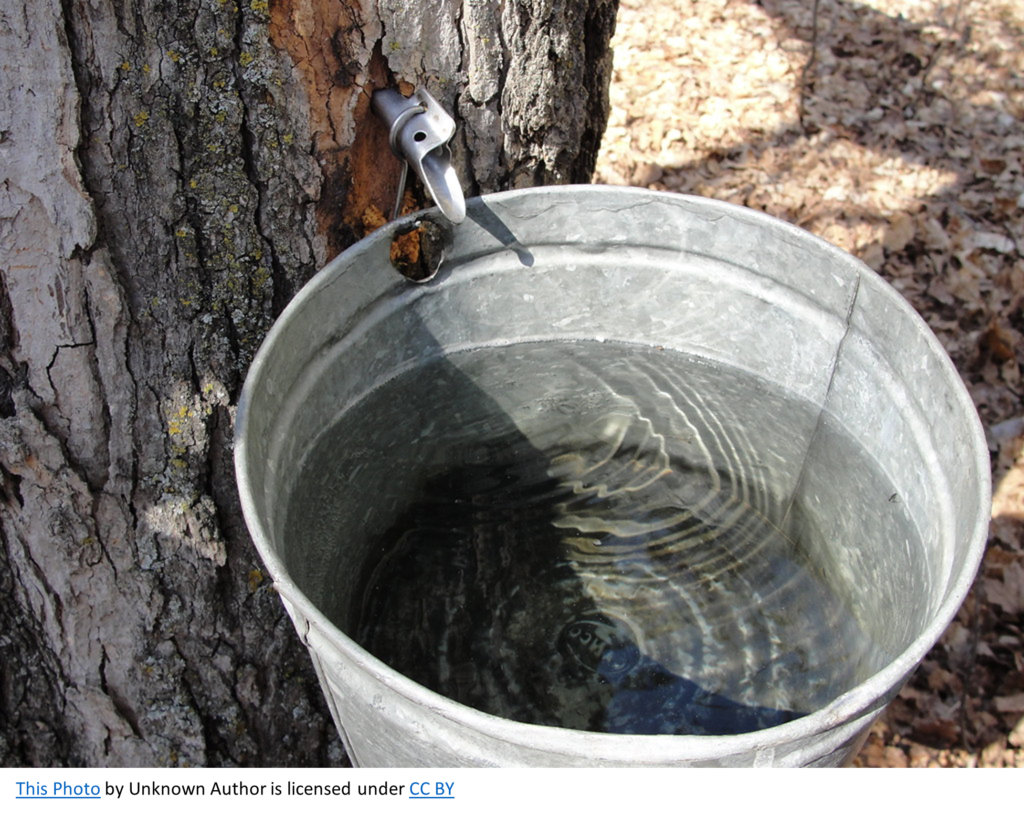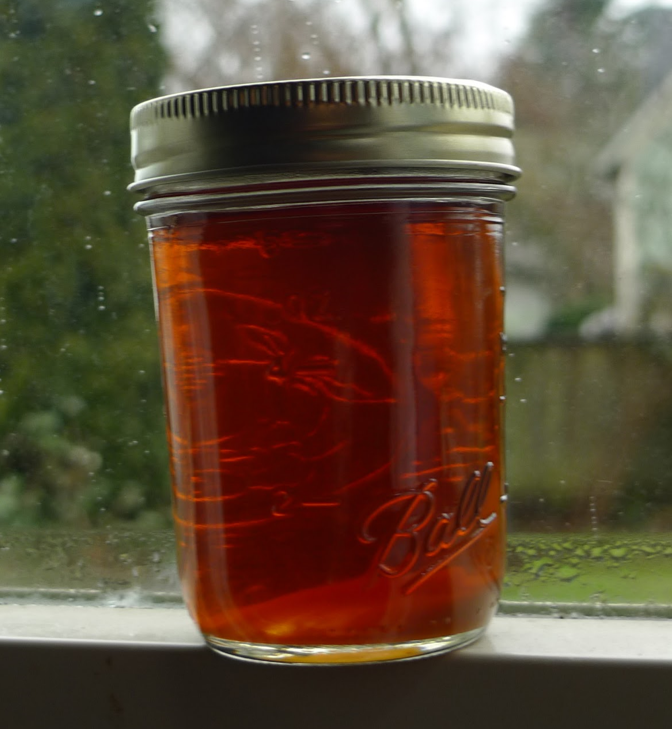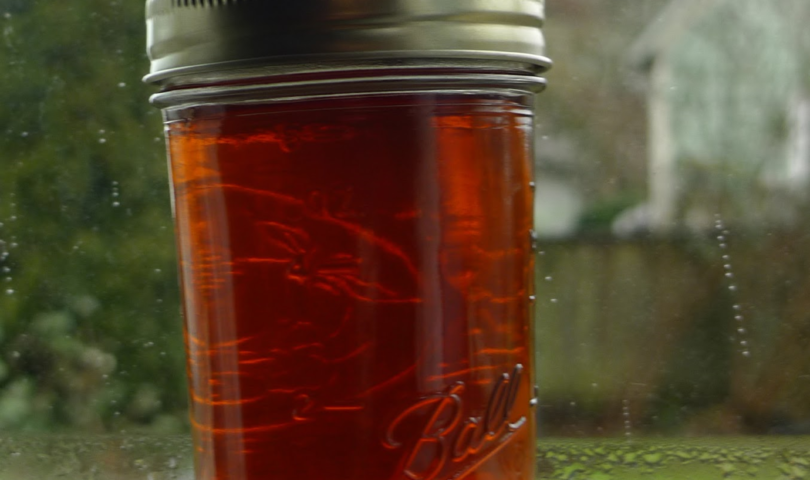Spring in Northern Michigan marks the return of the maple syrup season. For many this is the first opportunity to get back into the woods after a long winter. There is a lot of debate over the origins of maple tapping, but the practice goes back to indigenous culture where maple syrup and sugar were used as an important source of energy first thing in the spring for indigenous people and later European settlers to the area. Currently maple production is a growing industry that adds value to our forests. It is something that can be done on any scale from small back yard operations to large commercial facilities processing thousands of gallons of sap each year. The process, no matter what scale you are on, looks relatively the same. It involves three major steps; tapping, collecting, and boiling.

Tapping is the process of drilling a small hole into the trees sap wood layer, and inserting a tap or spile. The tap is a hollow tube made from metal or plastic that allows the excess sap from the tree to flow through and be collected into a container. Taps are driven into mature trees that are upwards of 10 inches in diameter. The larger the tree the more taps it can have. Tapping only removes about 10% of the trees total sap production. This process does not harm the longevity of the tree and can continue to be tapped each year.
Collection of sap usually involves going tree to tree and emptying buckets or other containers into a larger one for transport. This continues throughout the season which lasts for about 8 weeks with the heaviest flow being around 10 to 20 days. With the proper technique each tap that is placed will produce around 10 gallons of sap. Collection of the sap usually involves transporting large amounts of sap and finding a way to store it until it is time to boil. Since maple sap contains sugar, it must be kept cold otherwise it will spoil. This can be a bit of a challenge with fluctuating temperatures. Boiling sap needs to be done to increase the sugar content to a level that helps to limit the chance for spoilage and decrease the water content.

Boiling is started when you have reached your maximum capacity for sap storage. This aspect is the most time-consuming portion as the sap needs to be reduced by a rate of 30 -50 gallons of sap to one gallon of syrup. Sap averages about 2.5 % sugar content and syrup is done boiling at 67% sugar content. At this point it is 7.5 degrees above the boiling point of water. The boiling process can take a long time and is energy intensive. Traditionally this has been done using wood as the heat source, but some operations have moved to natural gas or propane. Boiling sap is a communal activity where friends and family are involved which makes syrup production such a great cultural activity.
Modern processes for producing syrup are designed to be faster. One process that is being readily adapted by producers is the aid of reverse osmosis. To summarize reverse osmosis is the process of filtering the water out of the sap in order to concentrate the product and shorten boiling times. Once the sap has reached the appropriate concentration it is now syrup and can be bottled and stored for future use or for sale.
Forest management often focuses on major monetary factors such as timber production for various timber products. Maple tapping is often overlooked as a viable management option and can create a long-term shared interest for family forest owners. Syrup production is easy to get started on a small scale and work upwards. Those interested or looking for more information on how to get a started or for more information on how to utilize your woods plants contact Dylan Parker at the Chippewa Luce Mackinac Conservation District by calling 906 -632-9611 x8055 or emailing Dylan at Dylan.parker@macd.org.
Dylan Parker- Forester
Chippewa Luce Mackinac Conservation District
- Keeping The Piece Quilters Guild to hold annual show in September - July 2, 2023
- District Court Report: April 20, 2023 - April 21, 2023
- Early Invaders of the Eastern Upper Peninsula - April 18, 2023



